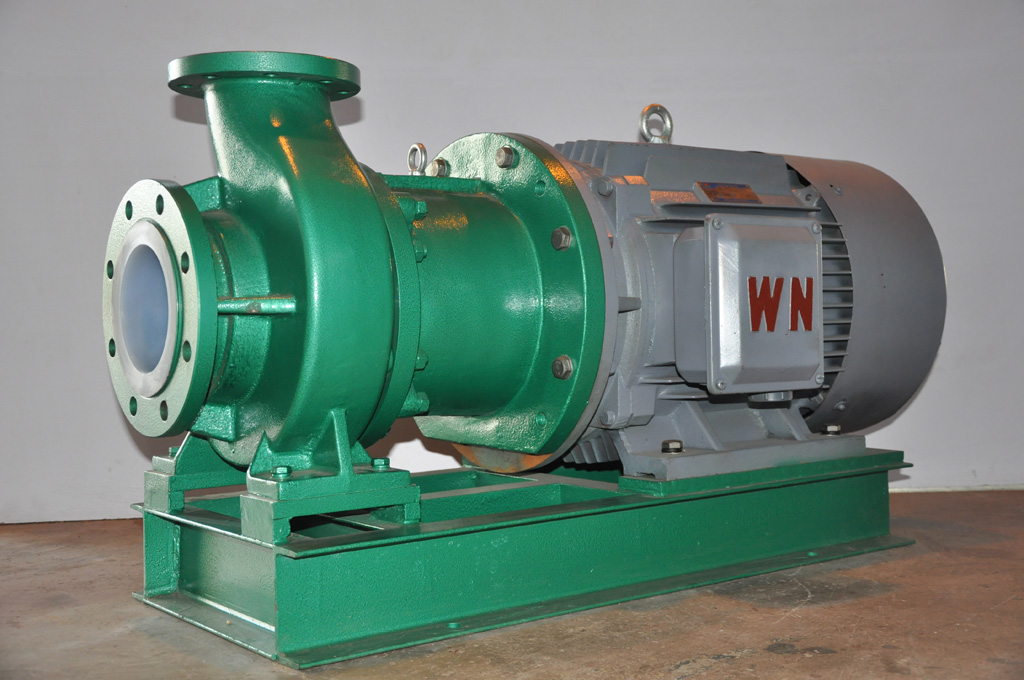What are the 3 major types of chemical pumps used?
2024-02-05Chemical pumps are indispensable equipment in industrial production, especially in chemical industry, pharmaceuticals, environmental protection and other fields. They are mainly used to transport various chemical fluids, including acids, alkalis, solvents and other corrosive or viscous liquids. According to different industrial needs and fluid characteristics, chemical pumps are mainly divided into three categories: centrifugal pumps, diaphragm pumps and gear pumps.

1. Centrifugal pump
Centrifugal pumps are the most common type of chemical pumps, which use a rotating impeller to generate centrifugal force to push fluids. When the motor drives the impeller to rotate, the liquid on the impeller is acted upon by centrifugal force and flows along the outer edge of the impeller toward the outlet of the pump housing, thereby realizing fluid transportation. Centrifugal pumps are suitable for applications with large flow rates and low lifting heights, such as water treatment and large-volume transfer of chemicals.
Due to its simple structure, easy maintenance and low cost, centrifugal pumps have been widely used in the chemical industry. However, for high viscosity fluids or fluids containing solid particles, the efficiency of centrifugal pumps will be affected. In addition, centrifugal pumps are generally not suitable for high pressure conveying.
2. Diaphragm pump
A diaphragm pump (also known as a pneumatic diaphragm pump) is a pump that uses a flexible diaphragm to reciprocate within the pump chamber to transport fluid. Diaphragm pumps use compressed air or liquid as a power source to drive the reciprocating motion of the diaphragm to suck in and discharge fluid. The advantage of a diaphragm pump is that it can transport corrosive, viscous, and solid particle-containing fluids without contaminating the fluid because the power source is isolated from the fluid.
Diaphragm pumps are widely used in precise metering of chemicals, safe transportation of hazardous chemicals, and situations where cross-contamination needs to be avoided. Diaphragm pumps are very popular in the chemical, pharmaceutical and food industries due to their high adaptability to fluid properties and good sealing properties.
3. Gear pump
A gear pump is a pump that uses two intermeshing gears to rotate in the pump chamber and transport fluid through changes in the volume between the teeth. Gear pumps are characterized by their ability to provide stable flow and high pressure, and are suitable for transporting fluids with higher viscosity. Gear pumps are commonly used to transport high-viscosity materials such as lubricants, resins, and paints, and are also suitable for chemical processes that require precise flow control.
The advantages of gear pumps are compact structure, relatively simple maintenance, and ability to cope with high-pressure conditions. However, gear pumps are sensitive to solid particles in the fluid, so special care is required when transporting fluids containing solids.
In general, different types of chemical pumps have their own characteristics and scope of application. When selecting a chemical pump, the most appropriate pump type needs to be determined based on the nature of the fluid, required flow rate, pressure, temperature, and overall system requirements. Centrifugal pumps, diaphragm pumps and gear pumps each play an important role in the chemical industry. Reasonable selection and use are crucial to ensuring the safety, efficiency and environmental protection of industrial production. As technology continues to develop, the design and materials of these pumps are constantly optimized to meet the needs of more demanding industrial applications.









